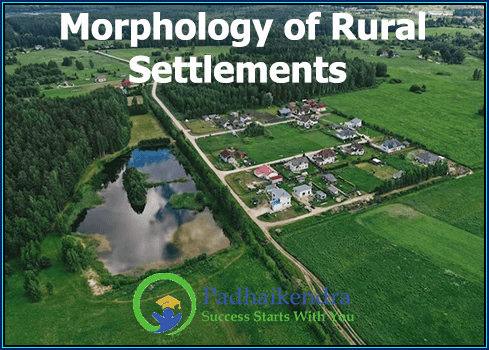The morphology of rural settlements refers to the physical and spatial characteristics of these settlements. Rural settlements can take many different forms, and their morphology is influenced by a range of factors, including geography, climate, culture, and history.
Some common morphological features of rural settlements include:
- Site and situation: Rural settlements are often located in areas that offer access to natural resources such as water, fertile soil, and timber. The location of a settlement can also be influenced by topography, climate, and proximity to transportation routes.
- Street pattern: In some rural settlements, buildings are arranged along a street or road, with homes and buildings facing the street. In other settlements, buildings are clustered together in a more organic pattern, with buildings oriented around shared open spaces or courtyards.
- Building materials: Rural settlements are often characterized by the use of local and traditional building materials, such as timber, stone, and mud. These materials are often chosen for their availability, affordability, and durability in local climatic conditions.
- Building types: Rural settlements can contain a range of building types, from simple vernacular homes to larger public buildings such as churches, schools, and town halls. The size and design of buildings can be influenced by cultural and historical factors, as well as local building practices and available resources.
- Land use: The land use of rural settlements can vary depending on local conditions and cultural traditions. Many rural settlements are primarily focused on agricultural activities, with homes and buildings interspersed among fields and orchards. Others may have a more mixed-use character, with commercial and residential buildings located in close proximity.
Overall, the morphology of rural settlements is shaped by a complex interplay of physical, social, and cultural factors. Understanding these factors can help inform the design of sustainable and resilient rural settlements that support local communities and promote economic development.





